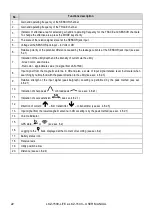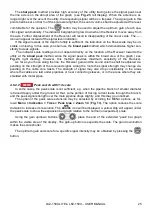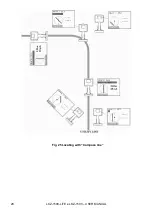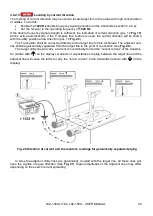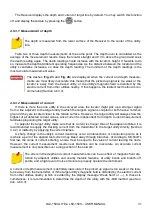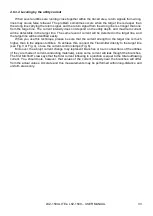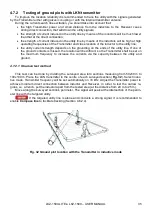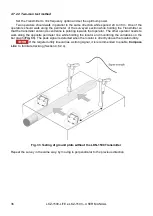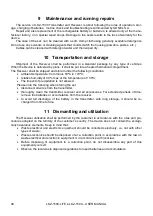
LKZ-1500-
LITE ● LKZ-1500 – USER MANUAL
33
4.6.3.4 Locating by the utility current
When several utilities are running close together within the traced area, return signals from wrong
lines may cause false retrieval. The problem sometimes occurs when the target line is deeper than
the wrong line carrying the return signal, and the return signal from the wrong line is stronger than one
from the target line. The current intensity does not depend on the utility depth, and maximum current
will be detectable in the target line. The same level of current will be detected in the target line, and
the target line will be identified easily.
When you use this technique, please be sure that the current strength in the target line is much
higher, than in the adjacent utilities. To achieve this, connect the Transmitter directly to the target line
(see Fig. 3 or Fig. 4), or use the current-control clamps (Fig. 6).
Moreover, the abrupt current change may represent branches or tie-in connections of the utilities
(if they are made of current-conducting materials), since some current will leak thought the branches.
The first Kirchhoff’s law says that the total current inflowing in a junction is equal to the total outflowing
current. You should note, however, that values of the current intensity near the branches will differ
from the actual values. Accurate and true measurements may be performed within long-distance and
uniform areas only.
Summary of Contents for LKZ-1500
Page 1: ......
Page 2: ......
Page 18: ...LKZ 1500 LITE LKZ 1500 USER MANUAL 16 Fig 10 LKO 1500 receiver panel...
Page 30: ...LKZ 1500 LITE LKZ 1500 USER MANUAL 28 Fig 25 Locating with Compass line...
Page 57: ...LKZ 1500 LITE LKZ 1500 USER MANUAL 55 NOTES...
Page 58: ...LKZ 1500 LITE LKZ 1500 USER MANUAL 56 NOTES...
Page 59: ......
Page 60: ......




